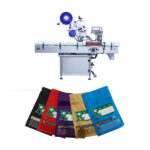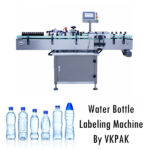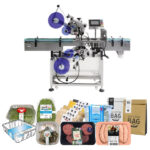Wine is an alcoholic drink typically made from fermented grapes. Yeast consumes the sugar in the grapes and converts it to ethanol and carbon dioxide, releasing heat in the process. Different varieties of grapes and strains of yeasts are major factors in different styles of wine.[From Wiki]
While there are thousands of grape varieties and dozens of wine glass styles to suit different types of wine, there are only a few standard wine bottle shapes and sizes. There are twelve sizes of wine bottle, ranging from 18.7 cl (187 ml) to 18 litres – although EU legislation currently sets a cap at 10 litres for still wine and 9 litres for sparkling wine.
Every bottle has a name, commonly biblically inspired. The most used bottles are the Bordeaux bottle – with tall shoulders, straight sides, and deep punt – and the Burgundy bottle – wider than Bordeaux bottles, with sloping shoulders and a deep punt. However, as discussed, the most popular bottle remains the Standard, mirroring the 750ml Bordeaux bottle.


VKPAK can provide labeling solutions for various wine bottles, from 18ml to 18 liter round bottles, conical bottles, square bottles, etc. We provide one-stop labeling solutions, whether you need to label a few hundred bottles a day, thousands of bottles or even tens of thousands of bottles; whether your bottles need one label, or two or more labels, whether your labels are common self-adhesive rolls, or sheets of label paper, VKPAK can provide you with the most suitable labeling solutions.
Below we will list some of the wine bottle labeling machine videos that VKPAK has provided.
Automatic Wine Bottle Sticker Labeling Machine [Collection]


0-20 seconds: round wine bottle labeling with 2 labels;
21-44 seconds: small tapered wine bottle labeling with 2 labels;
45-66 seconds: tapered bottle labeling with one label;
67-90 seconds: round bottle labeling with one transparent label;
91-138 seconds: round bottle labeling with two labels (one for the neck and one for the body);
Suitable for labeling round bottles, single label and double label can be pasted, and the distance between front and back double label can be adjusted flexibly. It can label about 50 bottles/min. With tapered bottle labeling function; The perimeter location detection device can be used to label the designated position on the perimeter surface. The equipment can be used alone, also can be used with packaging line or filling line. It is widely used in food,beverage,cosmetic pharmaceutical industries
Technical Feature:
1. Simple adjustment, configuration before and after, left and right and up and down directions, plane inclination, vertical inclination adjustment seat, different bottle shape switch without dead Angle, simple and quick adjustment;
2. Automatic bottle division, star wheel bottle division mechanism, effectively eliminate the bottle itself error caused by the bottle is not smooth, improve the stability;
3. Touch screen control, man-machine interaction interface with operation teaching function, simple operation;
4. Intelligent control, automatic photoelectric tracking, automatic label detection function, to prevent leakage and label waste;
5. Solid health, mainly made of stainless steel and senior aluminum alloy, solid quality, in line with GMP production requirements.
VK-T801 Semi Automatic Wine Bottle Labeler Machine [Collection]


Automatic Wine Bottle Wet Glue Labeling Machine [For Sheets of Paper Labels]


The labeling equipment is for the round bottle labeling in the industry like food, oil, pharma, wine, cosmetics and so on. The machine with elegant design can be easily operated and maintained by the common worker, who requires no special training in operation this machine. Just give a simple adjustment to produce another product when you want to swap the different kinds bottle labeling.
Why Choose Our Three Roller Positioning Labeling Machine For Wine Bottle Labeling
Built to Endure Heavy Workloads
Our wine bottle labeler is engineered with a robust conveyor belt base to ensure smooth transportation of each glass bottle. The stainless steel sidearms along the conveyor further enhance stability and precision, allowing for peak operational performance.
This machine is also seamlessly compatible with your existing production lines, enabling uninterrupted workflow at your facility.
Various Label Application Methods
Our wine bottle labeler can be configured for two types of label application methods – single label and front & back label applications.
For single label applications (front or back), our labeler can handle wine bottles of varying diameters and heights. The labels can be accurately oriented based on physical characteristics, registration marks or existing graphics. A single applicator is required for this process.
Front & back labeling involves applying front and back wine bottle labels in alternating fashion on the same web. As the indexer rotates each wine bottle, the controller will monitor the product’s rotation and trigger the applicator to apply the labels 180 degrees opposite of each other.
This method can also be achieved with two label applicators. The front wine bottle labels would be converted on one roll with the back labels being applied after the first label has been applied.
Different Types of Wine Labeling Equipment
Wineries have a range of options when it comes to labeling their bottled and canned wine. Generally, label applicator machines are available in three types: manual, semi-automatic, and automatic. Determining the label application requirements and production speed goals will help to narrow down the choices.
Manual labeling machines require workers to load and apply each label to bottles individually.
Semi-automatic labeling machines are operated using a hand or footswitch. An employee loads the bottles onto the conveyor and then presses a button to apply the labels. This method is faster and more consistent than manual hand labeling.
In many cases, a semi-automatic wrap-around labeling machine is the optimal choice for labeling bottled wine. This type of machine allows wineries to gradually ramp up from small-batch winemaking to a fully-automatic in-line labeler machine over time without requiring a complete overhaul of the equipment or bottling line.

Automatic labeling machines are available in both rotary and in-line models. Both types are faster and more precise than manual and semi-automatic labelers. In-line automatic labeling machines provide a significant boost in productivity and efficiency. Once wine bottles or cans are filled, they can be continuously fed into the labeling machine, resulting in approximately 50 labeled products per minute. Rotary labeling machines are at the top end of the spectrum, capable of running up to 200 labels per minute and providing the ultimate level of label placement control and consistency.
The capabilities and costs of automatic labeling equipment vary widely. Choose a machine that not only fits your current operational requirements but can also scale with your needs as your winery grows.
Evaluating Your Setup for Purchasing a Wine Bottle Labeling Machine
Before making any decisions on the type of wine label applicator machine to purchase, it is essential to evaluate your current setup and determine the role that the labeler machine will play in your bottling line. Setting parameters that will determine the size and type of labeling machine you need will help you choose a wine labeler that meets your needs, integrates smoothly into your current operation, and enhances your process efficiency.
Production Run Considerations
To properly assess your needs, it is important to establish your labeling and production goals. Start by determining the quantity and speed at which you want your product to move through the line. Label machines come in different speed ranges, so choose one that fits the speed that your line can maintain. You should also consider the potential downtime that could occur as you change labeling applications, such as moving from hand labeling to a semi-automatic machine.
When selecting a wine labeling machine, consider the pros and cons of each option and choose a labeler that will be easy for you to set up, use, and maintain.
Space and Equipment Considerations
Once you have clearly defined goals for the amount of wine you will be processing through your line and at what speed, the next step is to find equipment that will fit into the space you have and be easily accessible. Other considerations include the compatibility of the labeling machine with existing equipment and overall production line design.
Since your production line includes various machines such as fillers, cappers or corkers, and labelers, it is best to purchase a labeling machine that is compatible with your existing equipment to ensure efficiency and prevent problems. You can decide whether you want your labeling machine to fit in-line with your current machinery or if you prefer a freestanding labeler.
Choose a labeler that can keep up with your filling and sealing machines, as well as scale with your company as it grows.
Container and Label Considerations
Although most wineries still prefer glass bottles for their wine, aluminum cans are gaining popularity in the economy wine sector due to their light weight and cost-effectiveness. Regardless of the container you choose, it is essential to decide the wine label size, style, and placement. Options include front and back labels, wrap-around labels, or shrink sleeve labels.
If your bottle or can has an unusual shape or distinctive taper, you need a labeling machine that can properly affix labels to those unique dimensions. Although labeling machines come in a variety of sizes and types, they are not necessarily universal to all label applications.
Request a quote for our wine bottle labeler today and streamline your facility’s workload and efficiency.










